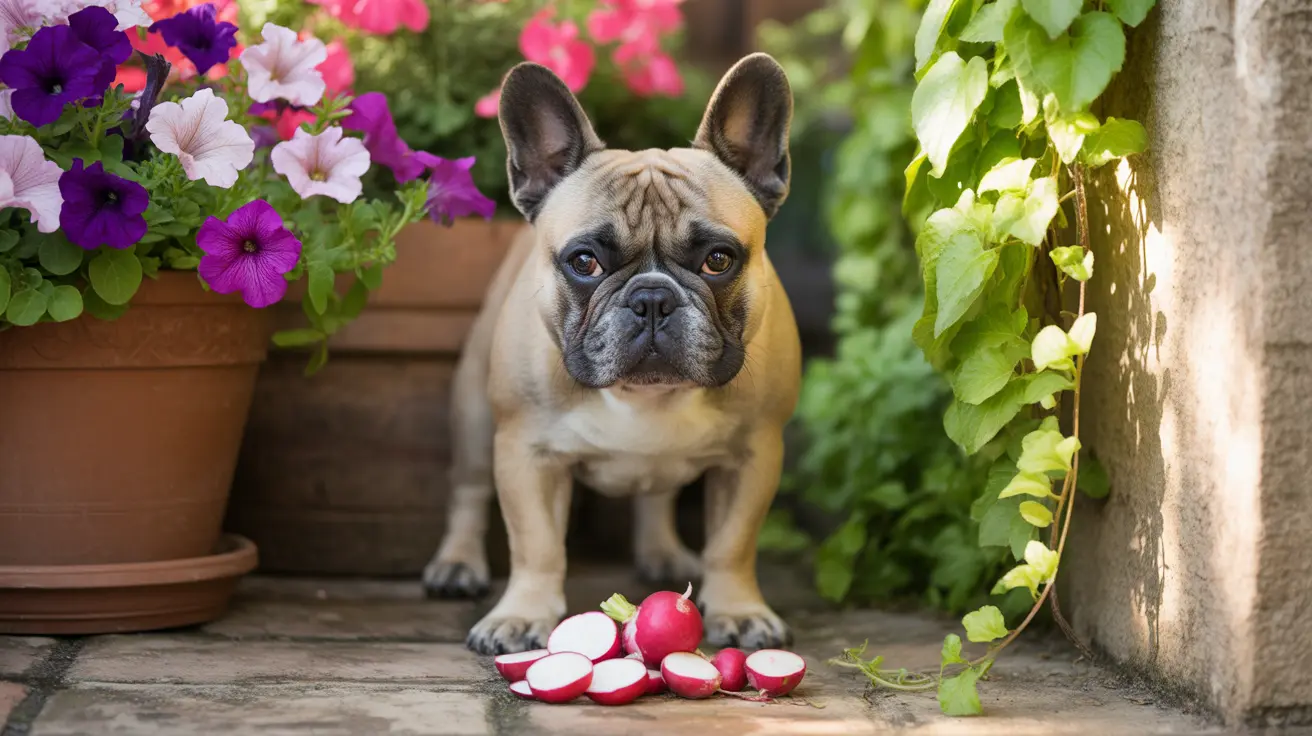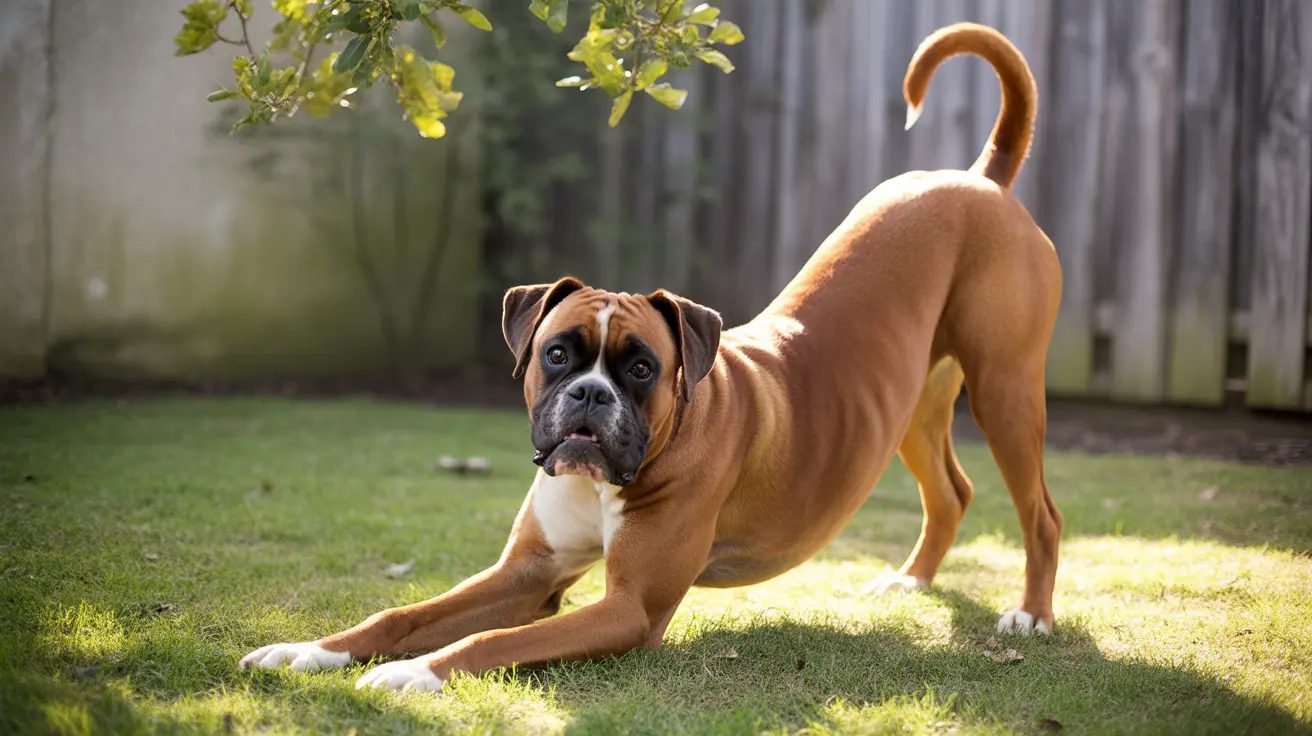Are Radishes Safe for Dogs? A Complete Guide to Feeding Your Pet This Crunchy Vegetable
As a responsible dog owner, you're always looking for healthy, natural treats to share with your furry companion. When you're munching on fresh radishes from your garden or preparing a salad, you might wonder: are radishes safe for dogs? The good news is that radishes can be a healthy, low-calorie snack for your canine friend when served properly and in moderation.
This comprehensive guide will walk you through everything you need to know about feeding radishes to dogs, from their nutritional benefits to proper preparation methods. We'll explore the potential risks, recommended serving sizes, and how to introduce this crunchy vegetable safely into your dog's diet. Understanding these details will help you make informed decisions about whether radishes are right for your pet.
Nutritional Benefits of Radishes for Dogs
Radishes are packed with essential nutrients that can support your dog's overall health. These root vegetables are particularly rich in vitamin C, which plays a crucial role in supporting your dog's immune system and promoting healthy skin and coat. Additionally, radishes contain calcium and potassium, minerals that are vital for maintaining strong bones, healthy teeth, and proper muscular and heart function.
One of the most appealing aspects of radishes for dogs is their low-calorie content combined with high water content, making them an excellent choice for overweight or diabetic dogs. The fiber content in radishes can also support healthy digestion when given in appropriate amounts. These vegetables provide antioxidants while remaining low in fat and sugar, making them a nutrient-dense treat option that won't contribute significantly to weight gain.
Dental Health Benefits: Natural Teeth Cleaning
The crunchy texture of radishes offers an unexpected benefit for your dog's oral health. When dogs chew on raw radishes, the fibrous texture can help remove plaque buildup from their teeth, similar to how dental chews work. This mechanical cleaning action can contribute to fresher breath and better overall dental hygiene, though radishes should never replace proper dental care and regular veterinary cleanings.
The natural abrasiveness of radishes makes them particularly effective at scraping away food particles and plaque that can accumulate on your dog's teeth. This benefit is most pronounced when radishes are served raw rather than cooked, as the cooking process can soften the texture and reduce the natural cleaning action.
Understanding the Risks: What Dog Owners Should Know
While radishes are generally safe for dogs, there are several important risks to consider. The most immediate concern is the choking hazard posed by large pieces of radish. Always cut radishes into appropriately sized pieces based on your dog's size to prevent choking incidents. Additionally, radishes contain mustard oil, which gives them their characteristic peppery taste and can cause digestive upset if consumed in large quantities.
Excessive consumption of radishes can lead to various digestive issues including nausea, vomiting, stomach cramps, acid reflux, and bloating. Some dogs may also experience rare allergic reactions that manifest as skin irritation or gastrointestinal symptoms. It's crucial to monitor your dog closely when introducing radishes and watch for any signs of adverse reactions.
Safe Preparation Methods and Serving Guidelines
Proper preparation is essential when feeding radishes to your dog. Always start by thoroughly washing the radishes to remove any dirt, pesticides, or harmful residues. Remove all radish greens, as these can cause gastroenteritis in dogs. The raw radish root is the only part that's safe for canine consumption.
After washing, peel the radishes and chop them into small, manageable pieces appropriate for your dog's size. Never add any seasonings, salts, oils, or dressings to the radishes, as these can be harmful to dogs. Serve the radishes plain and fresh for the best nutritional value and safety.
Recommended Serving Sizes by Dog Weight
- Extra-small dogs: About a 1/4-inch cube
- Small dogs: 1/2-inch cube
- Medium dogs: 1-inch cube
- Large dogs: Two 1-inch cubes
- Extra-large dogs: Three 1-inch cubes
Raw vs. Cooked Radishes: Which is Better?
Both raw and cooked radishes are safe for dogs, but raw radishes offer more benefits. Raw radishes maintain their crunchy texture, which provides the dental cleaning benefits mentioned earlier. They also retain more of their nutritional value compared to cooked radishes. However, some dogs may find raw radishes too peppery or strong-tasting.
Cooking radishes can make them softer and potentially more palatable for picky eaters, but it may reduce their appeal and nutritional content. White radishes tend to be less peppery than darker varieties, making them a good starting point for dogs new to this vegetable. Regardless of whether you choose raw or cooked, always serve radishes plain without any added ingredients.
Introducing Radishes to Your Dog's Diet
When introducing any new food to your dog's diet, including radishes, it's important to start slowly and monitor for reactions. Begin with a very small piece and observe your dog for 24-48 hours for any signs of digestive upset or allergic reactions. If your dog tolerates the initial serving well, you can gradually increase the portion size while staying within the recommended limits.
Remember that treats and vegetables like radishes should not exceed 10% of your dog's daily caloric intake. Radishes should be considered an occasional treat rather than a regular part of your dog's diet. Always consult with your veterinarian before introducing radishes or any new food, especially if your dog has existing health conditions or takes medications.
Organic vs. Conventional: Making the Best Choice
Choosing organic radishes when possible is advisable to minimize your dog's exposure to pesticides and other harmful chemicals that could negatively impact their health. Conventional radishes may contain pesticide residues that can be particularly harmful to dogs, whose smaller body size makes them more susceptible to the effects of these chemicals.
If organic radishes aren't available or feasible, ensure you wash conventional radishes thoroughly under running water and consider peeling them to remove any surface residues. This extra precaution can help reduce the risk of exposing your dog to potentially harmful substances.
Alternative Healthy Vegetable Treats
If your dog doesn't enjoy radishes or you're looking for variety in their treat options, there are several other dog-safe vegetables you can offer. Carrots, broccoli, cauliflower, peas, pumpkin, spinach, celery, green beans, lettuce, sweet potato, and zucchini are all safe alternatives that can provide similar nutritional benefits.
Each of these vegetables should be introduced gradually and under veterinary guidance, just like radishes. Some may require cooking to be easily digestible, while others can be served raw. Always research proper preparation methods and serving sizes for each new vegetable you want to introduce.
Foods to Avoid: What's Not Safe
While regular radishes are safe for dogs, it's important to distinguish them from related foods that are not safe. Horseradish and horseradish sauces should never be fed to dogs due to their extremely strong flavor and potential to cause severe gastrointestinal upset. Wild radishes should also be avoided as they may contain compounds that are harmful to dogs.
Additionally, always avoid feeding your dog radish greens or leaves, as these can cause gastroenteritis. Stick to the root portion only, properly prepared according to the guidelines outlined in this article.
Monitoring Your Dog for Adverse Reactions
Individual dogs may react differently to radishes, so careful monitoring is essential when introducing this new food. Watch for signs of allergic reactions such as itching, skin irritation, excessive scratching, or changes in behavior. Gastrointestinal symptoms to watch for include vomiting, diarrhea, excessive drooling, loss of appetite, or signs of stomach discomfort.
If you notice any adverse reactions, discontinue feeding radishes immediately and contact your veterinarian. Keep a record of what your dog ate and when symptoms appeared, as this information can be valuable for your veterinary consultation.
Frequently Asked Questions
Can puppies eat radishes?
Puppies can eat radishes, but extra caution is needed due to their smaller size and developing digestive systems. Use even smaller portions than recommended for adult dogs and consult your veterinarian before introducing any new foods to a puppy's diet.
How often can I give my dog radishes?
Radishes should be treated as an occasional treat, not a daily food. Offering radishes once or twice a week in appropriate portions is generally safe for most dogs, but always consult your veterinarian for personalized advice based on your dog's individual needs.
What should I do if my dog ate too many radishes?
If your dog consumed excessive amounts of radishes, monitor them closely for signs of digestive upset such as vomiting, diarrhea, or stomach discomfort. Provide fresh water and withhold food temporarily if vomiting occurs. Contact your veterinarian if symptoms persist or worsen.
Are red radishes different from white radishes for dogs?
Both red and white radishes are safe for dogs, but white radishes tend to be less peppery and may be more palatable for dogs trying radishes for the first time. The nutritional benefits are similar between varieties.
Can diabetic dogs eat radishes?
Radishes can be a good treat option for diabetic dogs due to their low sugar content and high water content. However, always consult with your veterinarian before adding any new foods to a diabetic dog's diet, as dietary management is crucial for their condition.
Should I cook radishes for my dog?
Cooking radishes is not necessary and may reduce their nutritional value and dental benefits. Raw radishes are generally preferred, but if your dog doesn't like the peppery taste, lightly cooking them without any seasonings may make them more palatable.
Can radishes cause gas in dogs?
Yes, like many vegetables high in fiber, radishes can cause gas in some dogs, especially when consumed in large quantities. Start with small portions to see how your dog's digestive system responds.
Conclusion
Radishes can be a healthy, nutritious treat for dogs when prepared properly and served in moderation. Their low-calorie content, combined with beneficial nutrients like vitamin C, potassium, and fiber, makes them an excellent choice for health-conscious pet owners. The dental cleaning benefits add another layer of value to this crunchy vegetable treat.
Remember that successful introduction of radishes to your dog's diet depends on proper preparation, appropriate portion sizes, and careful monitoring for any adverse reactions. Always prioritize your dog's safety by consulting with your veterinarian before introducing radishes or any new food. With the right approach, radishes can become a welcomed addition to your dog's treat rotation, providing both nutritional benefits and enrichment through their satisfying crunch.






